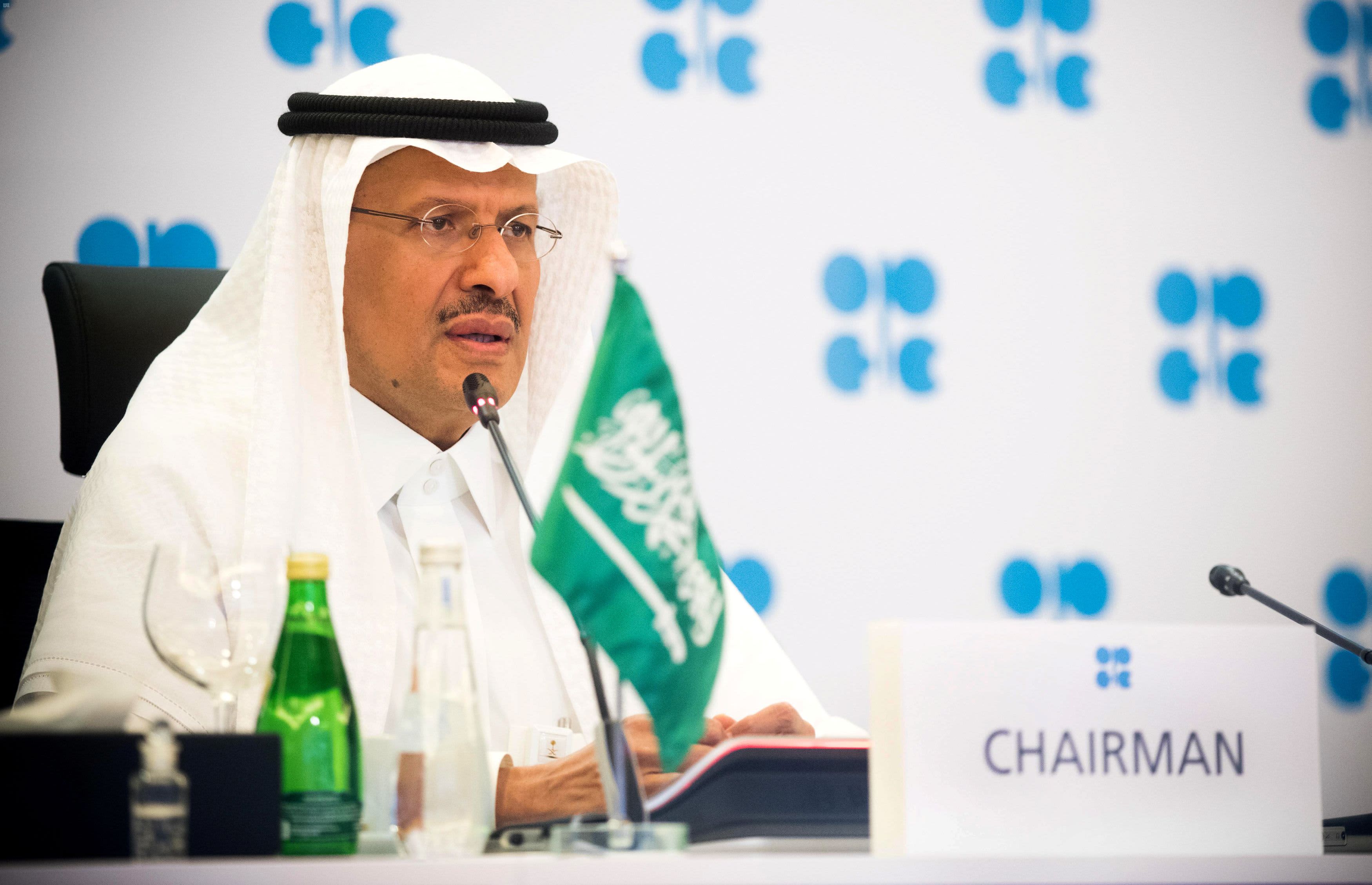Saudi Arabia’s Minister of Energy, Prince Abdulaziz bin Salman Al-Saud, talks via video link during a virtual emergency meeting of OPEC and non-OPEC countries in Riyadh, Saudi Arabia, on April 9, 2020, following the outbreak of the coronavirus disease (COVID-19). Reuters | Saudi Press Agency LONDON, United Kingdom — After unexpectedly failing to strike an agreement last week, oil producer organization OPEC will continue discussions with non-OPEC allies on Monday in the hopes of brokering a crude output pact. The OPEC+ energy alliance decided on Friday on a proposal to increase oil production by around 2 million barrels per day in 400,000 barrels per day monthly installments between August and the end of the year. It was also proposed that the remaining output cuts be extended until the end of 2022. The United Arab Emirates, on the other hand, rejected these measures, delaying a deal for the second day in a row, leaving oil markets in limbo over the weekend. On Sunday, UAE Minister of Energy and Infrastructure Suhail Al Mazrouei told CNBC’s Hadley Gamble, “It wasn’t a good deal for us.” While the UAE was willing to support a short-term boost in oil supplies, he noted that the UAE was looking for better conditions beyond 2022. Saudi Arabia’s Energy Minister Abdulaziz bin Salman, speaking to the Saudi-owned Al Arabiya television channel on Sunday, urged for “compromise and rationality” in order to achieve a settlement on Monday, according to Reuters. When the coronavirus pandemic coincided with a historic fuel demand shock, OPEC+, which is controlled by Middle Eastern crude producers, agreed to execute major crude production cuts in 2020 in an effort to stabilize oil prices. OPEC+, led by Saudi Arabia, a strong ally of the UAE, has met regularly since then to discuss production policies. It has resulted in a rare public spat between the UAE and Saudi Arabia, OPEC’s de facto leader and long-time regional friend. Participants in the energy sector are waiting for policy direction that will likely impact oil markets in the coming year. OPEC+ will meet again via videoconference on Monday at 2 p.m. London time. “The UAE has remained adamant in its refusal to budge, claiming that the October 2018 production standard is fundamentally unfair. As a result, even while it has not yet fully entered hard base-case zone, the likelihood of a no-deal scenario — as well as a UAE OPEC exit — has increased significantly “RBC Capital Markets’ head of global commodity strategy, Helima Croft, said in a research note. “In practice, however, the monthly meeting structure means that decisions can be easily reversed and that no state is permanent. On the other hand, if the discussions fail to produce results, there is a possibility of a return to an all-or-nothing output scenario, which may reverse this year’s oil price surge.” Croft said the meeting on Monday was unlikely to finish in chaos for a third day, but that possibility could not be ruled out. She went on to say, “Certainly, it is not a black swan situation.” International benchmark Brent crude prices were trading at $76.44 a barrel ahead of the discussions, up over 0.3 percent for the session, while US West Texas Intermediate futures were at $75.35, up about 0.25 percent. The deployment of Covid-19 vaccinations, a gradual relaxing of lockdown measures, and major production cuts from OPEC+ boosted oil prices by more than 45 percent in the first half of the year. Analysts had predicted that the energy alliance will increase supplies by 500,000 barrels per day starting next month. As a result, ING’s energy strategists predicted on Monday that an OPEC+ planned increase of roughly 400,000 barrels per day would likely strengthen prices. “Failure to reach an agreement may bring some short-term upside to the market,” they continued, citing suggestions that output would remain steady if OPEC+ failed to reach an agreement. “However, it might realistically herald the end of the broader deal, and therefore the possibility that members begin to increase output.”/n
Read MoreOPEC+ to resume crisis talks as Saudi Arabia and the UAE remain at loggerheads over oil output
2021-07-05T09:08:34-04:00July 5th, 2021|


